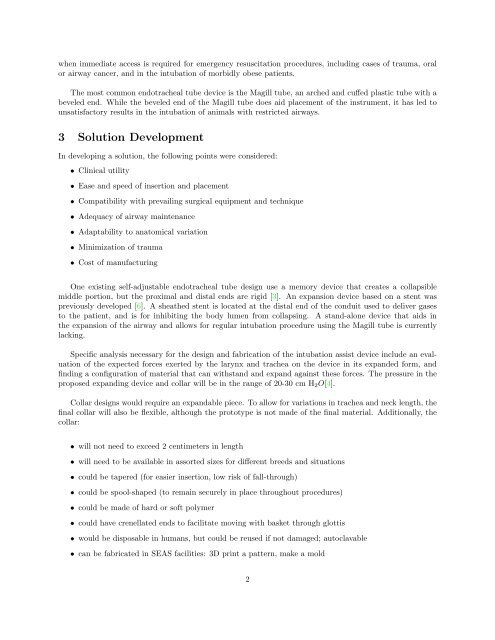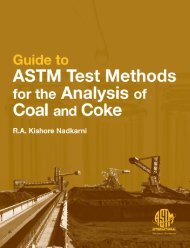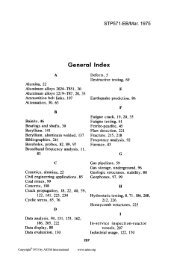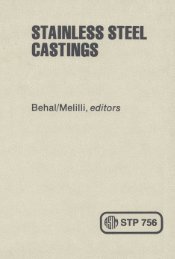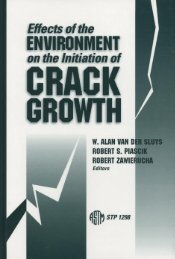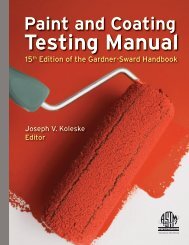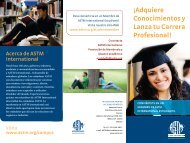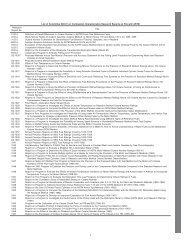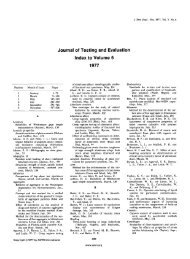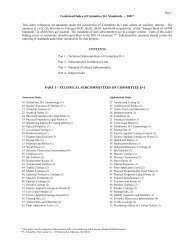Expandable Endotracheal Tube for Veterinary Patients - ASTM ...
Expandable Endotracheal Tube for Veterinary Patients - ASTM ...
Expandable Endotracheal Tube for Veterinary Patients - ASTM ...
Create successful ePaper yourself
Turn your PDF publications into a flip-book with our unique Google optimized e-Paper software.
when immediate access is required <strong>for</strong> emergency resuscitation procedures, including cases of trauma, oral<br />
or airway cancer, and in the intubation of morbidly obese patients.<br />
The most common endotracheal tube device is the Magill tube, an arched and cuffed plastic tube with a<br />
beveled end. While the beveled end of the Magill tube does aid placement of the instrument, it has led to<br />
unsatisfactory results in the intubation of animals with restricted airways.<br />
3 Solution Development<br />
In developing a solution, the following points were considered:<br />
• Clinical utility<br />
• Ease and speed of insertion and placement<br />
• Compatibility with prevailing surgical equipment and technique<br />
• Adequacy of airway maintenance<br />
• Adaptability to anatomical variation<br />
• Minimization of trauma<br />
• Cost of manufacturing<br />
One existing self-adjustable endotracheal tube design use a memory device that creates a collapsible<br />
middle portion, but the proximal and distal ends are rigid [3]. An expansion device based on a stent was<br />
previously developed [6]. A sheathed stent is located at the distal end of the conduit used to deliver gases<br />
to the patient, and is <strong>for</strong> inhibiting the body lumen from collapsing. A stand-alone device that aids in<br />
the expansion of the airway and allows <strong>for</strong> regular intubation procedure using the Magill tube is currently<br />
lacking.<br />
Specific analysis necessary <strong>for</strong> the design and fabrication of the intubation assist device include an evaluation<br />
of the expected <strong>for</strong>ces exerted by the larynx and trachea on the device in its expanded <strong>for</strong>m, and<br />
finding a configuration of material that can withstand and expand against these <strong>for</strong>ces. The pressure in the<br />
proposed expanding device and collar will be in the range of 20-30 cm H 2 O[4].<br />
Collar designs would require an expandable piece. To allow <strong>for</strong> variations in trachea and neck length, the<br />
final collar will also be flexible, although the prototype is not made of the final material. Additionally, the<br />
collar:<br />
• will not need to exceed 2 centimeters in length<br />
• will need to be available in assorted sizes <strong>for</strong> different breeds and situations<br />
• could be tapered (<strong>for</strong> easier insertion, low risk of fall-through)<br />
• could be spool-shaped (to remain securely in place throughout procedures)<br />
• could be made of hard or soft polymer<br />
• could have crenellated ends to facilitate moving with basket through glottis<br />
• would be disposable in humans, but could be reused if not damaged; autoclavable<br />
• can be fabricated in SEAS facilities: 3D print a pattern, make a mold<br />
2


